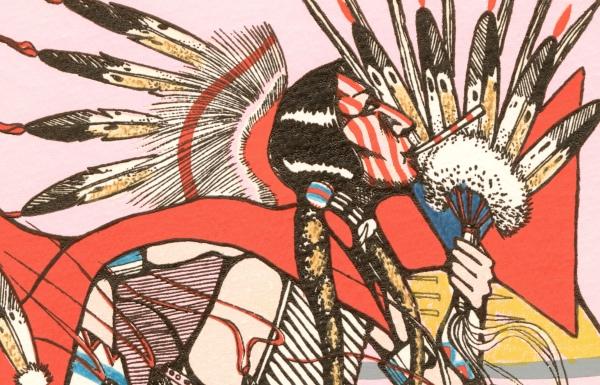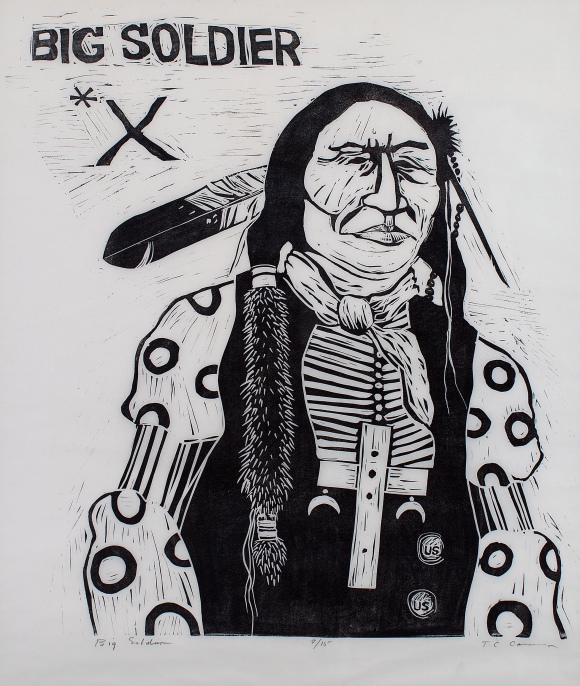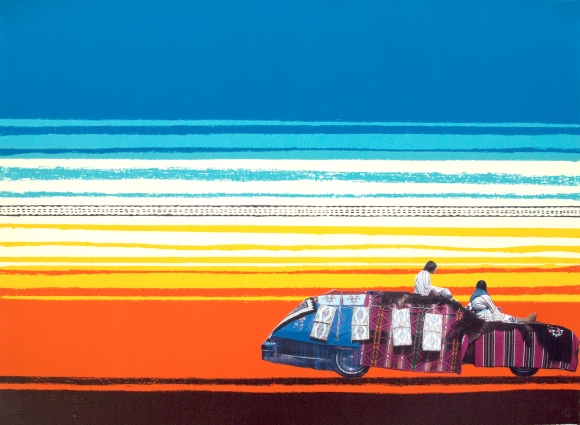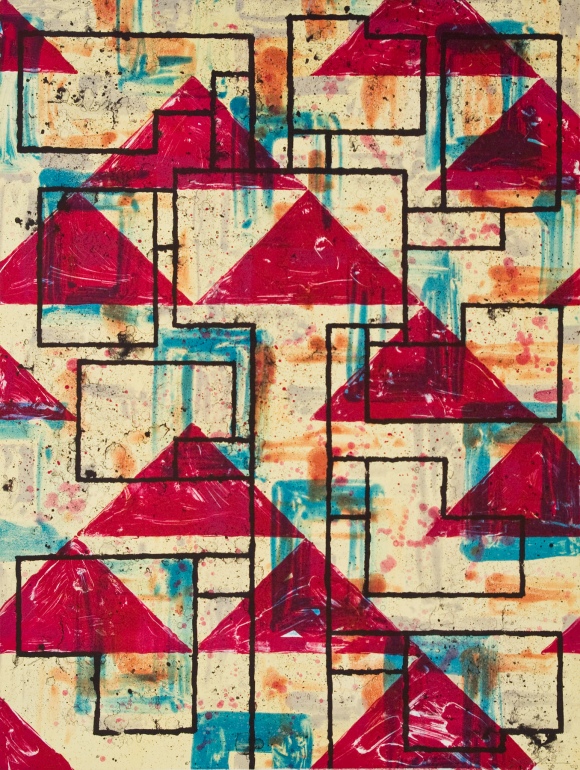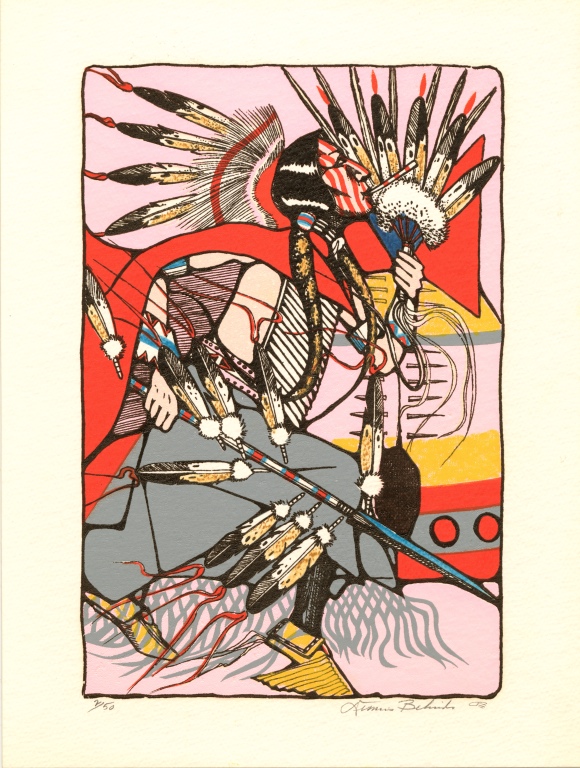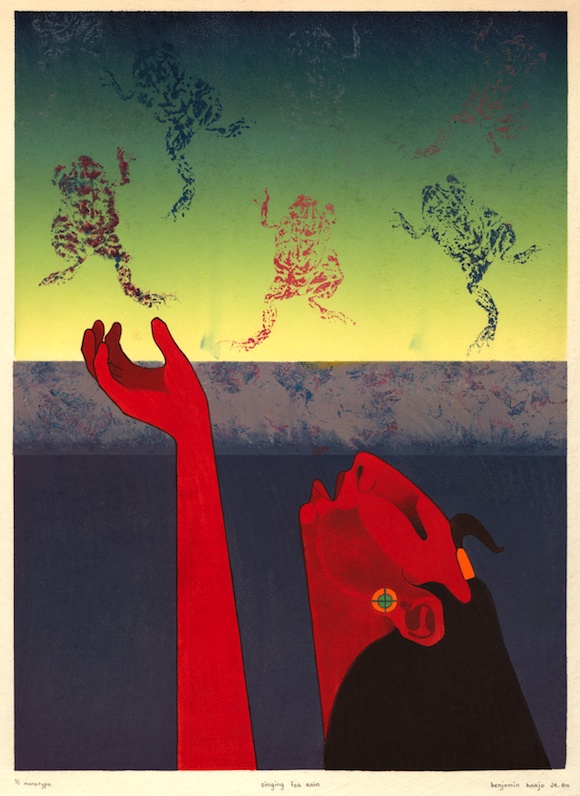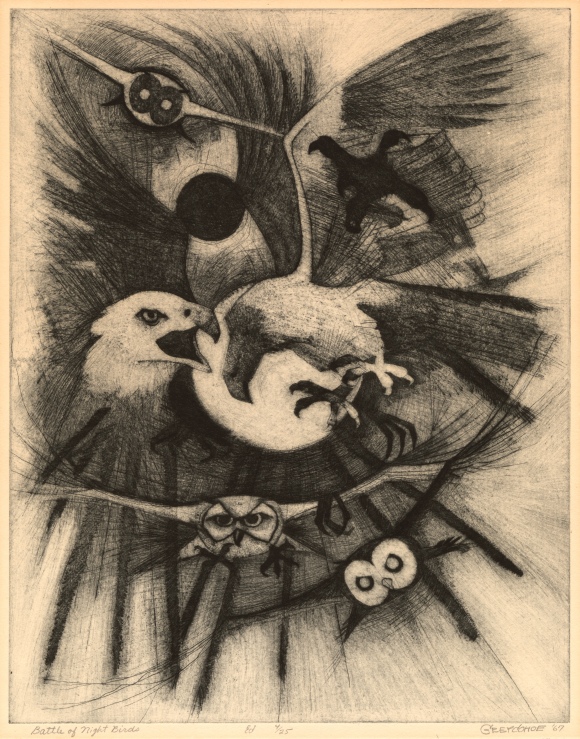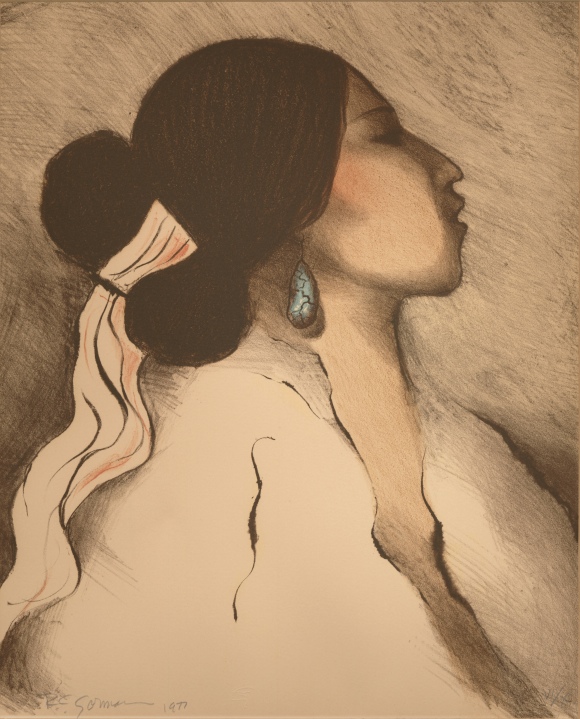 |
Canku Ota
|
 |
|
(Many Paths)
|
||
|
An Online Newsletter
Celebrating Native America
|
||
|
July 2015 - Volume 13
Number 7
|
||
|
|
||
|
Native Printmakers
At Fred Jones Museum: Skill And Community On Display
|
||
|
by Brian Daffron - Indian
Country Today Media Network
|
||
|
When people think of an artist at work, in many cases those thoughts are of the painter or sculptor, alone, in his or her studio. Yet, not all media is created in this fashion. In many instances, art is a collaborative process—a result of several artists coming together. For those artists involved in printmaking, this is what draws them to the medium.
For Navajo artist Melanie Yazzie, what draws her to print making is “the community aspect,” she said, “because usually you’re working in a community shop and sharing equipment with other people. When you come together to print, there’s always time shared with other artists.”
This sharing of ideas is on display with “Enter the Matrix: Indigenous Printmaking,” which opened June 4 at the Fred Jones Jr. Museum of Art on the University of Oklahoma campus in Norman, Oklahoma. The exhibit features indigenous art from not only from North America, but also from New Zealand and Africa. Yazzie, one of the artists featured in the exhibit, draws not only on the Dine heritage learned from her parents, Albert and Bessi Yazzie, and her grandparents, but also from working with other indigenous printmakers from throughout the world. “We find strength in making artwork together, sharing a studio space and making prints,” Yazzie said. “There’s a support system that comes about from it. We may be from different communities—from New Zealand, here in the U.S. or from Australia—but through the artwork that we have, we are seen together, from a distance.”
In addition to making prints on paper, Yazzie also incorporates other materials into her work—notably sacks for Bluebird flour, a brand of flour highly regarded in the Southwest. “At home on the Navajo Nation, we use the Bluebird flour to make frybread,” Yazzie said. “Also when I was growing up, the flour sacks were saved to make curtains or used to cover meat when we butchered sheep. Way in the past, different people used it to make clothing or different undergarments. It symbolized a lot of different things beyond just flour sacks. Most Navajo people, when they see them, understand that history that it carries. It reminds them of home, of community, of ceremony.”
Another artist with work in the show is Joe Feddersen of the Colville Confederated Tribes. In his prints, Feddersen finds ways to use not only traditional designs from woven baskets and sally bags, but also from designs in the manmade world such as parking lots and high voltage towers. “They became a way of reassessing what was around me,” Feddersen said about his weaving. “A lot of times, the patterns talked about the land. They talked about the land today.” The Feddersen print selected for this exhibit, “Wyit View,” has just such a story. During his 2003 period of study at the Crow’s Shadow Institute in Pendleton, Oregon, the Umatilla tribe voted against continuation of the Wyit View housing addition due to the presence of a nearby burial site. Originally, Feddersen wanted to create a print that honored the Umatilla’s work, but then changed the meaning of the piece to reflect the tribe’s decision.
“The tribe was willing to give all the money back, because they didn’t want to disrupt the site,” Feddersen said about the Umatilla decision at that time. “Instead of celebrating their prosperity, it became to celebrate their integrity, what they want to do with the land, and how they want to honor the land.” In addition to the works of Yazzie and Feddersen, other artists in the show include Wendy Red Star, Dennis Belindo, Grey Cohoe, Benjamin Harjo, Jr., R.C. Gorman and T.C. Cannon. The exhibit shows through January 2, 2016.
|
||||||||||||||||
|
|
||
|
|
||
| Canku Ota is a free Newsletter celebrating Native America, its traditions and accomplishments . We do not provide subscriber or visitor names to anyone. Some articles presented in Canku Ota may contain copyright material. We have received appropriate permissions for republishing any articles. Material appearing here is distributed without profit or monetary gain to those who have expressed an interest. This is in accordance with Title 17 U.S.C. Section 107. | ||
|
Canku Ota is a copyright ©
2000 - 2015 of Vicki Williams Barry and Paul Barry.
|
||
 |
 |
|
|
The "Canku
Ota - A Newsletter Celebrating Native America" web site and
its design is the
|
||
|
Copyright ©
1999 - 2015 of Paul C. Barry.
|
||
|
All Rights Reserved.
|
||
